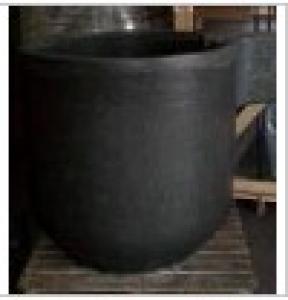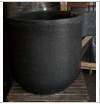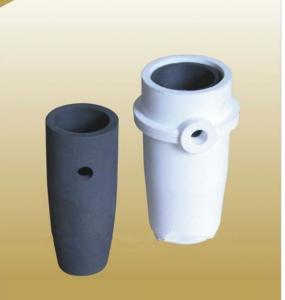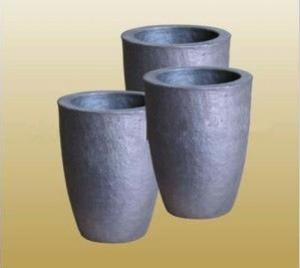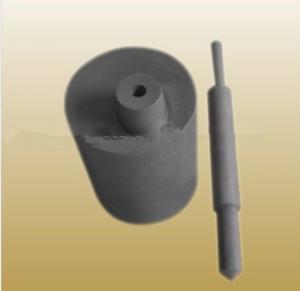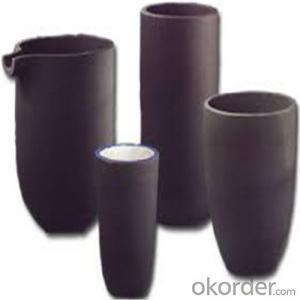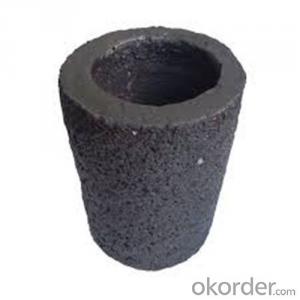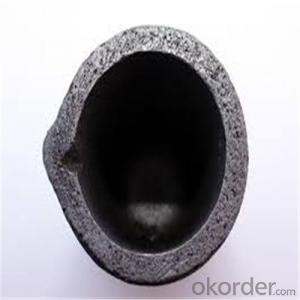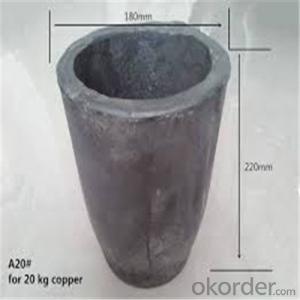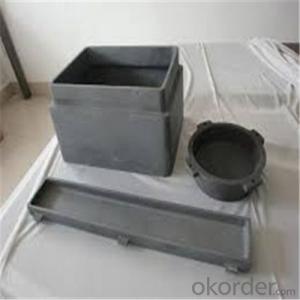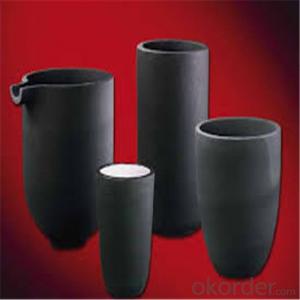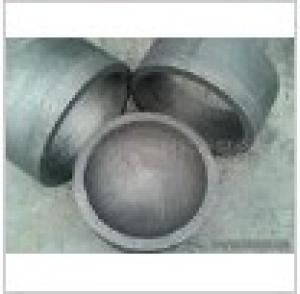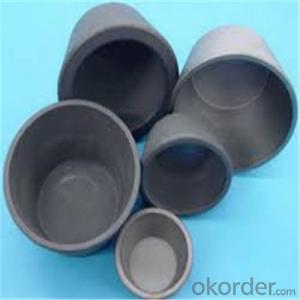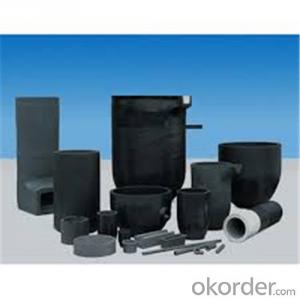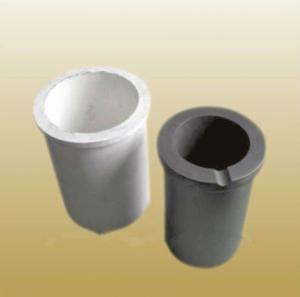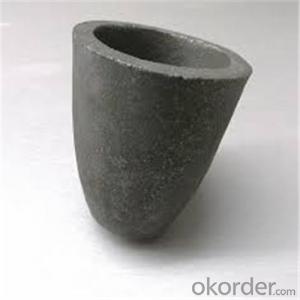Special Graphite Crucible for Aluminum Products
- Loading Port:
- China Main Port
- Payment Terms:
- TT or LC
- Min Order Qty:
- 50 Sets set
- Supply Capability:
- 3000 Sets per Month set/month
OKorder Service Pledge
Quality Product, Order Online Tracking, Timely Delivery
OKorder Financial Service
Credit Rating, Credit Services, Credit Purchasing
You Might Also Like
Detailed Product Description
Special Shaped Graphite products are used in various industrails,including graphite crucible and graphite seal
Special Shaped Graphite products are used in various industrails.it can be used as sealing in machinery as carbon graphite material, such as the quiet ring or the moving ring, doctorblade, piston-ring, sealing expansionring and the raw materias.
- Q: Can graphite crucibles be used for melting thermoplastics?
- No, graphite crucibles cannot be used for melting thermoplastics. Graphite crucibles are typically used for high-temperature applications such as melting metals and alloys due to their high melting point and excellent thermal conductivity. Thermoplastics have much lower melting points and require crucibles made of materials such as stainless steel or ceramic to withstand the lower temperatures and prevent contamination.
- Q: What are the different methods of monitoring the melting process in a graphite crucible?
- There are several methods of monitoring the melting process in a graphite crucible, including visual inspection, thermocouple temperature measurement, pyrometry, and spectroscopy. Visual inspection involves observing the melting material through a transparent cover or window to assess its state. Thermocouples can be used to measure the temperature directly at different points in the crucible, providing real-time temperature data. Pyrometry utilizes infrared radiation to measure the temperature of the molten material. Spectroscopy involves analyzing the emitted light or radiation from the melting material to determine its composition and temperature.
- Q: Are there different sizes available for graphite crucibles?
- Yes, there are different sizes available for graphite crucibles.
- Q: The graphite boat loading and loading real real graphite boat is what?
- Main features:1, can make accurate Shi Mozhou bearing loading vehicle positioning;2 、 made of stainless steel, the structure of the whole machine is firm and reliable;3 、 adopt GK series high efficiency air filter 3;4, PECVD carrier car inside, can tilt 15 degrees or rotate 180 degrees;5 、 purification fan noise is less than 50dB.6, to ensure that the work area to achieve the requirements of cleanliness 100.
- Q: How long can a graphite crucible last?
- The lifespan of a graphite crucible can vary depending on several factors such as usage, temperature, and handling. Generally, a well-maintained graphite crucible can last for several months to a few years, with regular inspections and proper care.
- Q: Is pig iron smelted in a graphite crucible?
- In charge of limestone (CaO) from slagging, fluxing action, it can reduce the melting temperature of iron ore, iron and other elements also formed slag react, covering on the surface of the molten iron, molten iron and insulation protection.After the pig iron smelting, made pig iron ingot, sold to the market. According to the application of ingot has two kinds: cast iron and steel and iron.Casting pig iron: the fracture surface is dark grey, and the mass fraction of silicon is high. It is mainly used in the production of cast iron parts.Steel pig iron: the fracture surface is bright white, and the mass fraction of silicon is low. It is mainly used in the steelmaking process.
- Q: Graphite crucible used six or seven times on how bad?
- And the solution in the barrier, is it right?. The main check temperature should not be too fast, rapid cooling.
- Q: Aluminum crucibles can be used to heating soda?
- I don't know much about the reaction, but the melting point of aluminum is lower than that of soda ash.
- Q: Can I add a graphite furnace to the East and West aa-7002?
- Atomizer with different flame atomizer consists of three parts: atomizer, premixing chamber and burner. Features: easy operation and good reproducibility.
- Q: How do you determine the appropriate crucible tongs for a specific application?
- When choosing the right crucible tongs for a specific task, several important factors should be taken into account. Initially, the size and weight of the crucible that will be used must be determined. Crucible tongs are typically designed to accommodate a specific range of crucible sizes and weights, so it is crucial to select tongs that can securely and safely grip the crucible. Subsequently, the material of the crucible and the temperature at which it will be employed should be considered. Different materials and temperatures necessitate different types of tongs. For instance, if the crucible is composed of a heat-resistant material like ceramic or porcelain and will be exposed to high temperatures, it is crucial to opt for tongs specifically designed for high-temperature applications, such as those made from stainless steel or other heat-resistant alloys. Furthermore, the shape and design of the crucible should be taken into account. Some crucibles possess distinctive features, like handles or spouts, which require tongs with a specific shape or grip. It is important to choose tongs that can securely hold the crucible without causing any damage to its shape or structure. Lastly, the comfort and safety of the user should be considered when selecting crucible tongs. Tongs with ergonomic handles and a comfortable grip should be sought after to minimize the risk of accidents or injuries. It is also essential to ensure that the tongs are in good condition, showing no signs of wear or damage that could compromise their strength or stability. In conclusion, careful consideration of the crucible's size, weight, material, temperature, shape, and the user's comfort and safety is necessary when determining the appropriate crucible tongs for a specific application. Taking these factors into account will ensure that the chosen tongs are suitable for the task at hand and can securely handle the crucible throughout its use.
Our products are sold all over the country, and exported to America, Germany, Spain, India, Japan and Korea. Besides, we have strict management and advanced production technology.
We promise we will win more clients and a larger market with honest commercial credit, high quality of products, competitive price and good service.
1. Manufacturer Overview
| Location | Inner Mongolia,China (Mainland) |
| Year Established | 2006 |
| Annual Output Value | US$2.5 Million - US$5 Million |
| Main Markets | 7.14% North America 7.14% South America 7.14% Eastern Europe 7.14% Southeast Asia 7.14% Africa 7.14% Oceania 7.14% Mid East 7.14% Eastern Asia 7.14% Western Europe 7.14% Central America 7.14% Northern Europe 7.14% Southern Europe 7.14% South Asia 7.14% Domestic Market |
| Company Certifications |
2. Manufacturer Certificates
| a) Certification Name | |
| Range | |
| Reference | |
| Validity Period |
3. Manufacturer Capability
| a) Trade Capacity | |
| Nearest Port | Xingang,Tianjin |
| Export Percentage | 31% - 40% |
| No.of Employees in Trade Department | 21-50 People |
| Language Spoken: | English, Chinese |
| b) Factory Information | |
| Factory Size: | 1,000-3,000 square meters |
| No. of Production Lines | 7 |
| Contract Manufacturing | 1,000-3,000 square meters |
| Product Price Range | Low and/or Average |
Send your message to us
Special Graphite Crucible for Aluminum Products
- Loading Port:
- China Main Port
- Payment Terms:
- TT or LC
- Min Order Qty:
- 50 Sets set
- Supply Capability:
- 3000 Sets per Month set/month
OKorder Service Pledge
Quality Product, Order Online Tracking, Timely Delivery
OKorder Financial Service
Credit Rating, Credit Services, Credit Purchasing
Similar products
Hot products
Hot Searches
Related keywords
